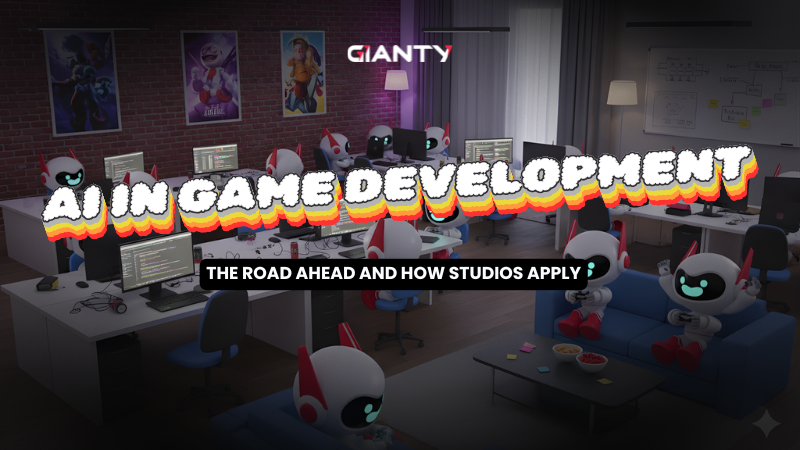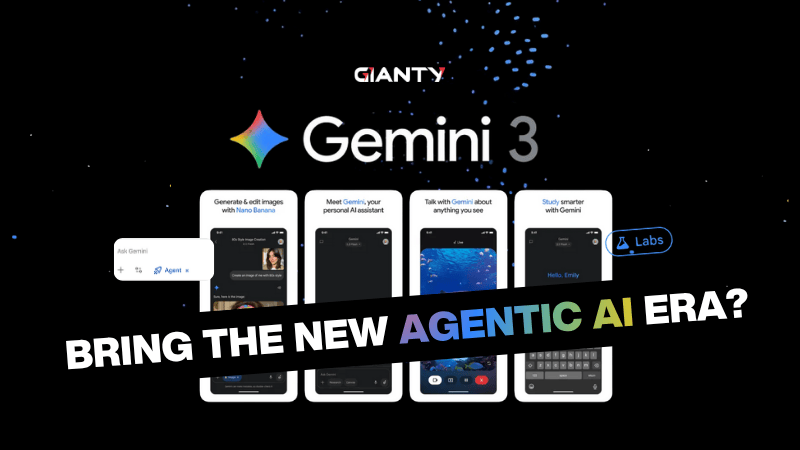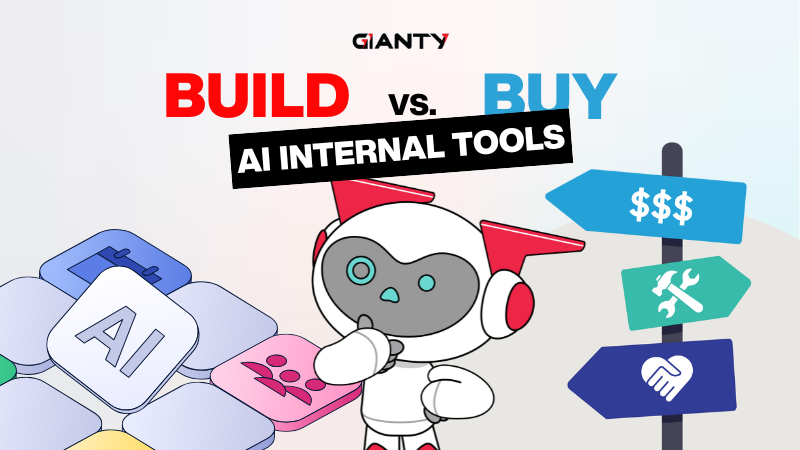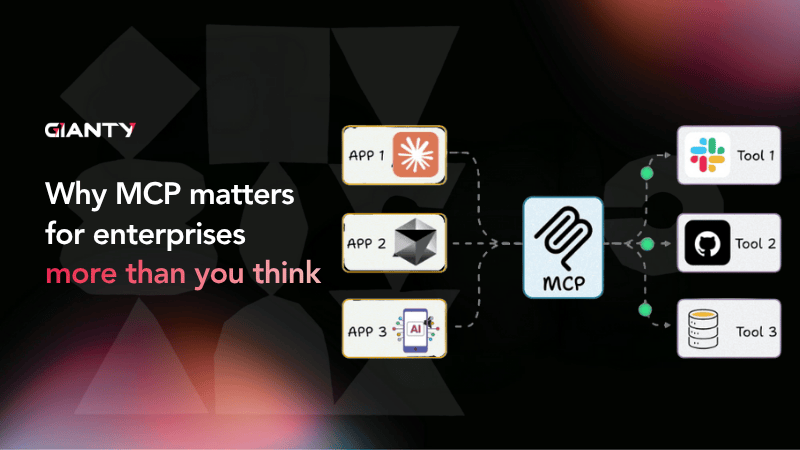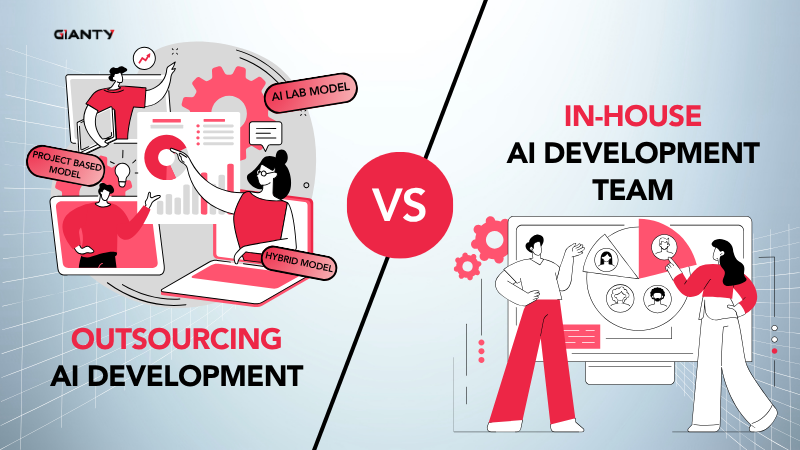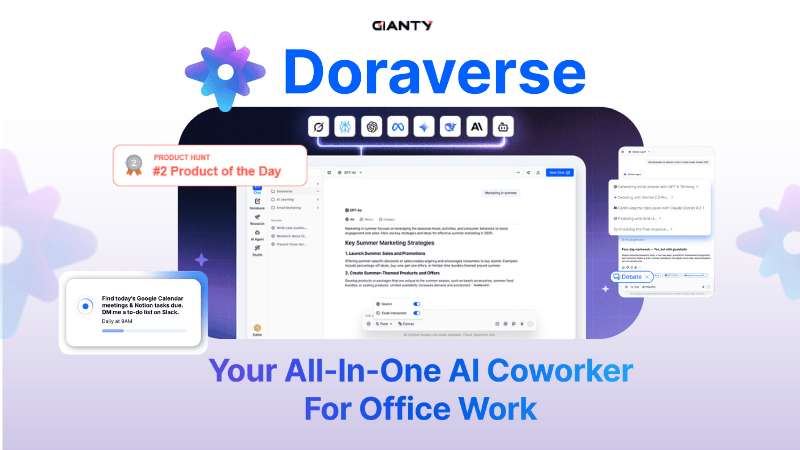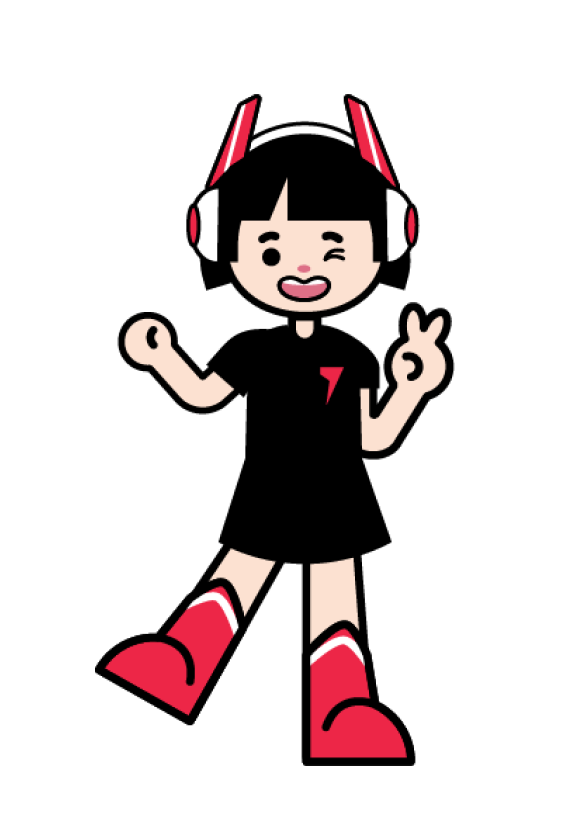At GIANTY, we’re always on the lookout for the next big leap in creative technology, and in 2025, that leap has a name: Veo 3. This is the latest mind-blowing innovation from DeepMind. It’s not just another AI tool generating dreamy visuals. Veo 3 promises something bolder: realistic, cinematic videos complete with synchronized audio – all from a text prompt.
But the question is: Is this a game-changer for creators, filmmakers, and marketers – or are we falling for another AI-driven hype cycle? Let’s dive into what Veo 3 is, why it’s trending, and what it really means for the future of AI video generator.
What Is Veo 3 – And Why Is It Blowing Up Right Now?
Unveiled at Google I/O 2025, Veo 3 is the latest evolution of Google’s text-to-video generation models. But this time, it goes far beyond just generating video – Veo 3 is about filmmaking intelligence. It can understand film-specific prompts like “a wide-angle drone shot at golden hour,” and then produce a 1080p or even 4K video complete with synchronized ambient sound, dialogue, and music – all AI-generated.

The buzz is massive for a reason:
- Visual realism: Smooth motion, realistic physics, camera dynamics
- Audio support: Native voiceovers, sound effects, and ambient noise
- Prompt accuracy: It does exactly what you ask, including detailed scenes and sequencing
- Creative control: Users can shape story arcs, and motion paths, or even use reference images and styles
Cinematic quality: Lighting, shading, and depth that mimics live-action or animated film
A funny TED Talk generated by Veo3
Thousands of clips created using Veo 3 are already trending across X (Twitter), TikTok, Reddit, Facebook, Instagram and YouTube. The AI filmmaking revolution has truly begun and Veo 3 is its flagship. But when a tool goes viral this fast – is it innovation or hype?
Key Features That Set Veo 3 Apart
What Veo 3 Can Do
Veo 3 isn’t just better than its predecessors Veo 2 – it’s an entirely different class of generative model. Here’s what makes it revolutionary:
Native 4K Output and Physics-Based Realism
Veo 3 delivers high-resolution (up to 4K) output with lifelike detail. What sets it apart is its physics engine: water flows realistically, shadows shift with light, characters move with weight. Veo understands real-world dynamics and replicates them on screen.
Built-In Audio Generation
Unlike most AI video tools, Veo 3 generates native audio: including voices, music, ambient sounds, and sound effects. Whether it’s dialogue in a short film or environmental soundscapes, Veo 3 syncs sound with the action for an immersive result.
Prompt Adherence Like Never Before
Veo 3 dramatically improves instruction-following. You can now generate clips with precise action sequences and scene transitions, such as “a robot walks through fire, then turns toward the camera as a spaceship lands behind.”
Style Matching and Visual Referencing
You can now guide Veo using reference images for both style and character consistency. Want a Studio Ghibli look or a specific actor-like character across scenes? Just upload your image and Veo will match it.
Character Controls
Using video inputs, you can control character motion, facial expressions, and even lip sync. Move your body or talk into the camera – Veo uses that to animate a character in real time.
Advanced Camera Tools
Veo now includes cinematography controls: zooms, pans, dolly moves, and camera tracking. Combined with Flow, Google’s cinematic editor, you can define motion paths and transitions for every scene.
Object Editing: Add / Remove / Outpaint
With just a prompt, you can add new objects like a torch or spaceship, remove unwanted elements, or even extend the frame using outpainting, giving you better aspect ratio control for any screen format.
This Veo3 video depicts a grizzled old sailor poetically describing the ocean’s power while standing on a ship.
Veo 3’s Limitations
Despite the leap in capability, Veo 3 isn’t perfect – and there are real constraints:
- Max video length: 8 seconds
- Limited access: Only available in the U.S., and only for users on the Google AI Ultra Plan ($249.99/month)
- Audio syncing: While impressive, sometimes speech and visuals slightly fall out of sync
- No public demo or free trial
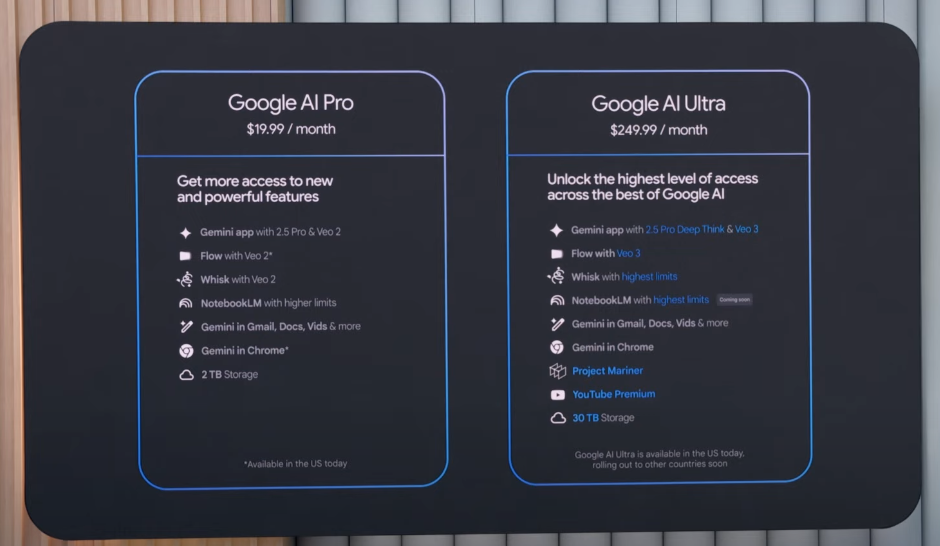
These limitations make Veo 3 ideal for professional creators, but still inaccessible for the average user – at least for now. Is 8 seconds enough to tell a story? For some, it’s just a sketch. For others, it’s all they need to go viral.

How to Access Veo 3
There are currently two main ways to use Veo 3. Both require an Ultra subscription and are early access only in the U.S. — so unless you’re on the inside, you’ll be watching from the sidelines (for now).
- Flow – A timeline-based editor built by Google for creative professionals. Think of it as Final Cut meets AI.
- Gemini App – For mobile users, more streamlined for experimentation.

Veo 3 Everywhere: Creative Boom or Content Overload?
In just a few short weeks, Veo 3 content has taken over the internet. The excitement is tangible: short-form platforms like TikTok and YouTube Shorts are flooded with Veo-powered stories. Visual artists are remixing aesthetics, marketers are using Veo for quick mockups and pitches, and educators are experimenting with explainer clips that would’ve been time- or cost-prohibitive to make manually.
Popular genres include anime-style shorts, surreal dream logic sequences, high-concept ads, and even faux movie trailers. But for every spark of genius, there’s a growing cloud of concern.
As more Veo 3 videos flood social feeds, audiences are already reporting a kind of “prompt fatigue” – a sense that many clips, while visually stunning, feel eerily similar. The same camera pans, dramatic lighting, and smooth animation style start to blur together. With so many creators using the same tools and templates, originality can quickly get lost in the algorithm.
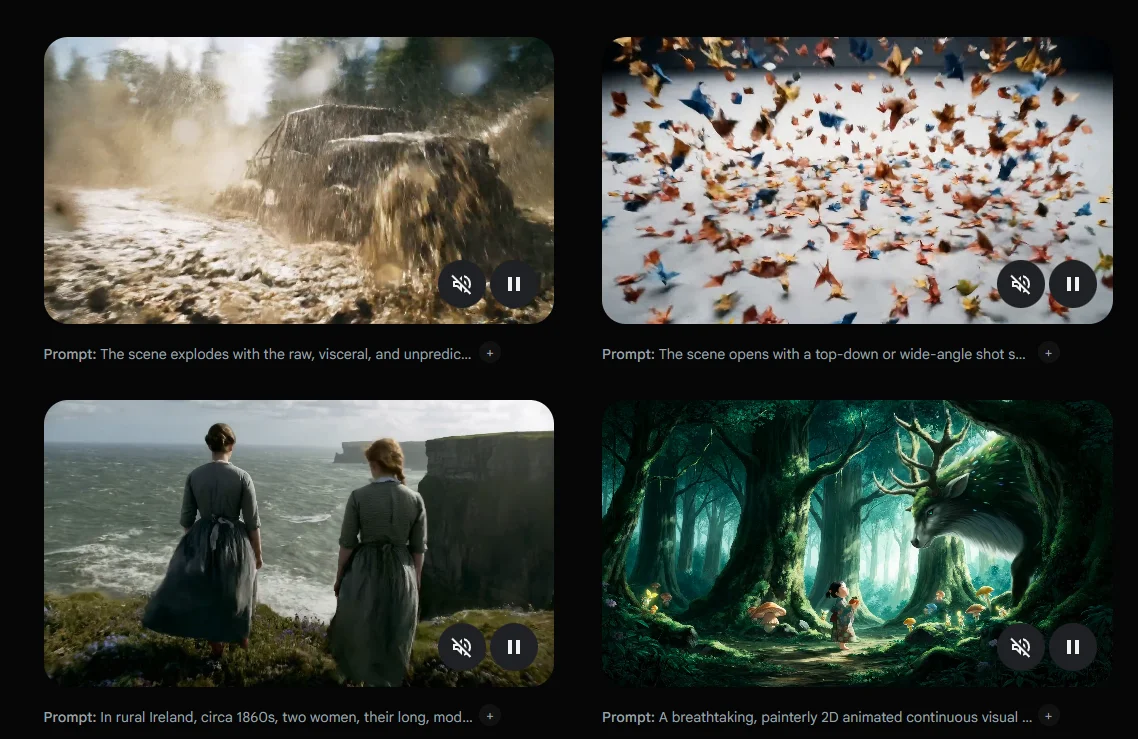
Risks, Red Flags & What to Watch For
As Veo 3 accelerates the rise of AI-generated video, it also brings a wave of ethical and legal concerns that can’t be ignored:
- Deepfakes and synthetic voices: Hyperrealistic outputs raise the risk of misinformation, impersonation, and manipulated narratives.
- Ownership and authorship: With AI handling most of the creative lift, questions about who truly “owns” the content are still unsettled.
- Bias and misrepresentation: Like all AI trained on real-world data, Veo 3 may inadvertently replicate harmful stereotypes or biased portrayals.
- Lack of regulation: Without clear guidelines or content moderation tools, these powerful models could be misused at scale.
This car show doesn’t even exist, but it looks so real that anyone could be fooled by Veo 3’s technology.
The big question now is not just what Veo 3 can do but how responsibly we can integrate it into mainstream storytelling.
What Do People Think about Veo 3?
Since its debut, Veo 3 has lit up the internet with a mix of praise and concern. From indie creators to marketers and tech critics, everyone seems to have something to say but not everyone agrees on what it means for the future. Here’s a snapshot of what people are saying:

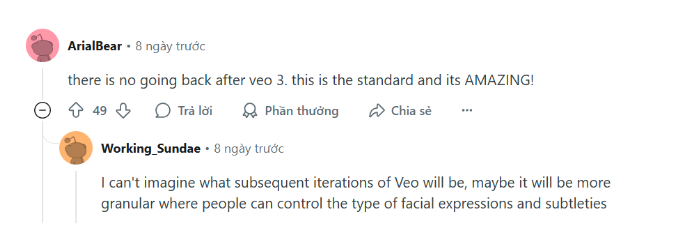
Who Should Actually Care About Veo 3?
Veo 3 isn’t just for tech enthusiasts — it’s a game-changer for anyone who works with visual storytelling. Its ability to generate high-quality video and native audio from a simple prompt unlocks new creative possibilities across industries. If your work involves storytelling, branding, or education, Veo 3 offers a powerful way to go from idea to impact – fast.
- Marketers can use it to produce fast-turnaround ad prototypes, product demos, and immersive moodboards without hiring a full production team.

- Content creators on platforms like TikTok, YouTube, and Instagram gain a new tool for producing stylized, voice-integrated clips at speed.
1992 Music video for a Seattle grunge band called “Pepper’s Ghost” playing a song called “Sure said shame”
- Educators can turn complex topics into short, visual explainers or microlearning assets that boost engagement.
This AI-generated video showcases Veo 3’s ability to produce realistic airline safety briefings
- Creative agencies benefit from rapid ideation and pre-visualization – create campaign concepts with polished video in minutes.
Veo 3 used for product advertising
Veo 3 vs. Sora: AI Showdown
As generative video tools make waves across the creative industry, two names stand at the forefront: Google’s Veo 3 and OpenAI’s Sora. Both models have stunned audiences with their high-fidelity visuals and natural motion, sparking a new wave of innovation for marketers, filmmakers, educators, and hobbyist creators alike.
But while they may seem similar on the surface, Veo 3 and Sora are built with different strengths, design philosophies, and user goals in mind. One leans into realism, precision, and control – the other embraces artistic freedom and cinematic wonder.
If you’re trying to figure out which tool is right for your creative workflow or just curious about how these AI titans compare, this side-by-side breakdown highlights their differences in output, usability, features, and intent.
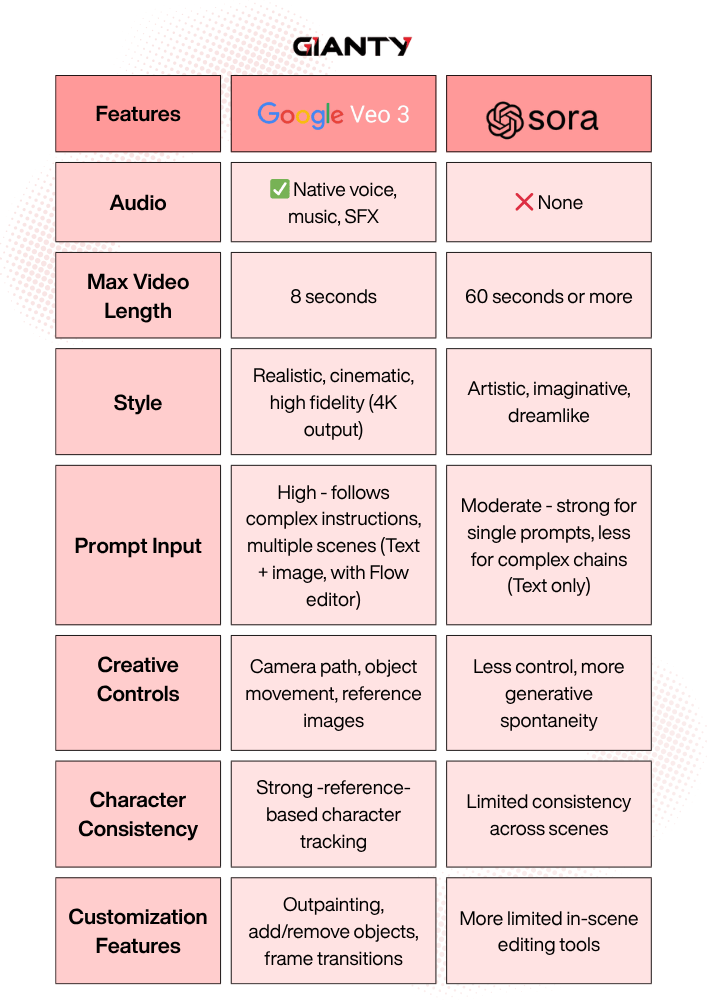
Final Thought: Is This the Beginning of AI-Driven Filmmaking?
Veo 3 marks a significant leap forward in AI video generation but it’s not a tool for everyone just yet. Its true power lies in creative empowerment, enabling storytellers, marketers, and educators to visualize ideas faster than ever.
We’re still in the early days of AI filmmaking, but the momentum is undeniable. Whether you’re experimenting with short-form content or prototyping cinematic scenes, Veo 3 could be your creative co-pilot.
Will you be one of the early adopters shaping the future of AI storytelling?
If you’re excited about the intersection of AI, video, and creativity, follow GIANTY’s News and stay tuned – we’ve got more insights, tips, and trend breakdowns coming your way.



